Pianote Review 2025: The Honest Truth About Learning Piano With Video Lessons
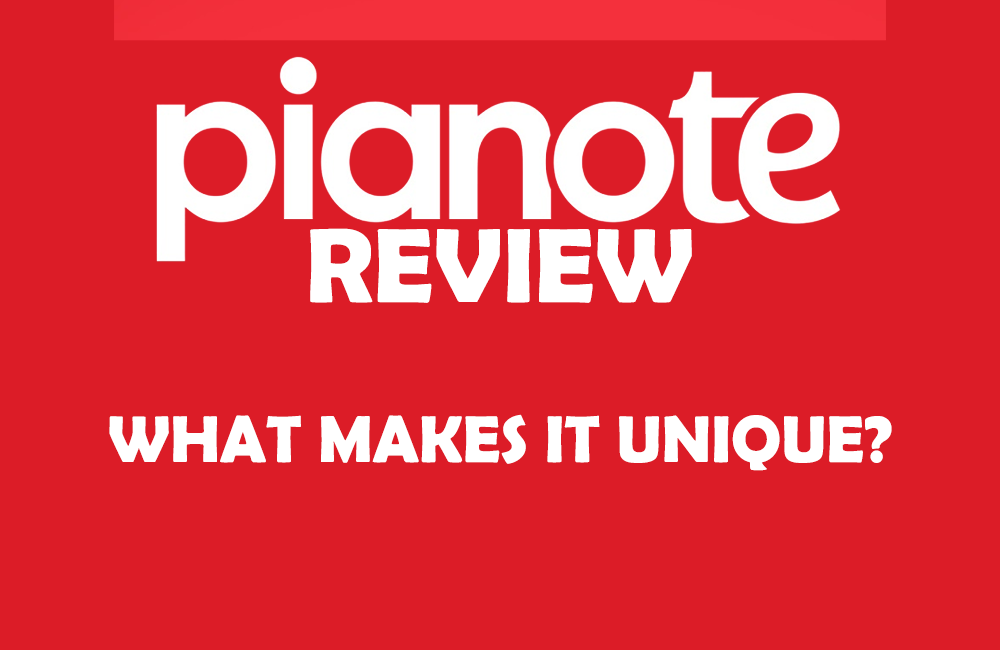
If you’ve ever tried to learn piano and felt like your hands belong to someone else (awkward, slow, and painfully uncoordinated), you already know the struggle. Online platforms keep promising to make it painless, fast, and fun. Pianote, from the Musora Media family (Drumeo, Guitareo, Singeo), markets itself as the “real teacher” alternative to gamified apps. It’s built around video lessons, a structured 10-level curriculum, song tutorials, and a community. No falling notes, no microphone listening, just videos and practice.
I’ve played piano for over 20 years, taught privately, and tested pretty much every major online piano course. I spent several weeks inside Pianote to see what holds up and what doesn’t. Here’s the unfiltered version.
TL;DR: Pianote Review
- Overview: Subscription video platform with a 10-level core Method, 500+ song tutorials, live Q&As, student forums, and video feedback (on the higher plan).
- Key Features:
- Structured 10-level curriculum (beginner to low-intermediate).
- Library of note-for-note song transcriptions with slowdown/loop tools.
- Weekly live lessons, student review submissions, community forums.
- Pianote+ includes full song access and cross-platform Musora content.
- Pricing (as of Dec 2025):
- Basic Pianote (lessons only): $25/month or $200/year.
- Pianote+: $30/month or $240/year (required for full song library and video feedback).
- 7-day free trial + 90-day money-back guarantee. Lifetime option occasionally available (~$997).
- Pros:
- Clear, personality-driven teaching from experienced instructors.
- Strong focus on chords, theory, and ear training from early levels.
- Huge and regularly updated song library.
- Active student community and weekly live sessions.
- Cons:
- Zero real-time note detection or feedback (you have to self-correct).
- Navigation is cluttered and overwhelming after Level 3.
- Price has crept up since 2022; many older users feel locked out.
- Customer support and billing complaints are common on Trustpilot/BBB.
- Classical training is superficial at best.
- Rating: 7.5 / 10 — Very good for motivated pop/rock/jazz learners who don’t need hand-holding feedback. Mediocre for total beginners who require instant correction or for serious classical students.
What Pianote Actually Is
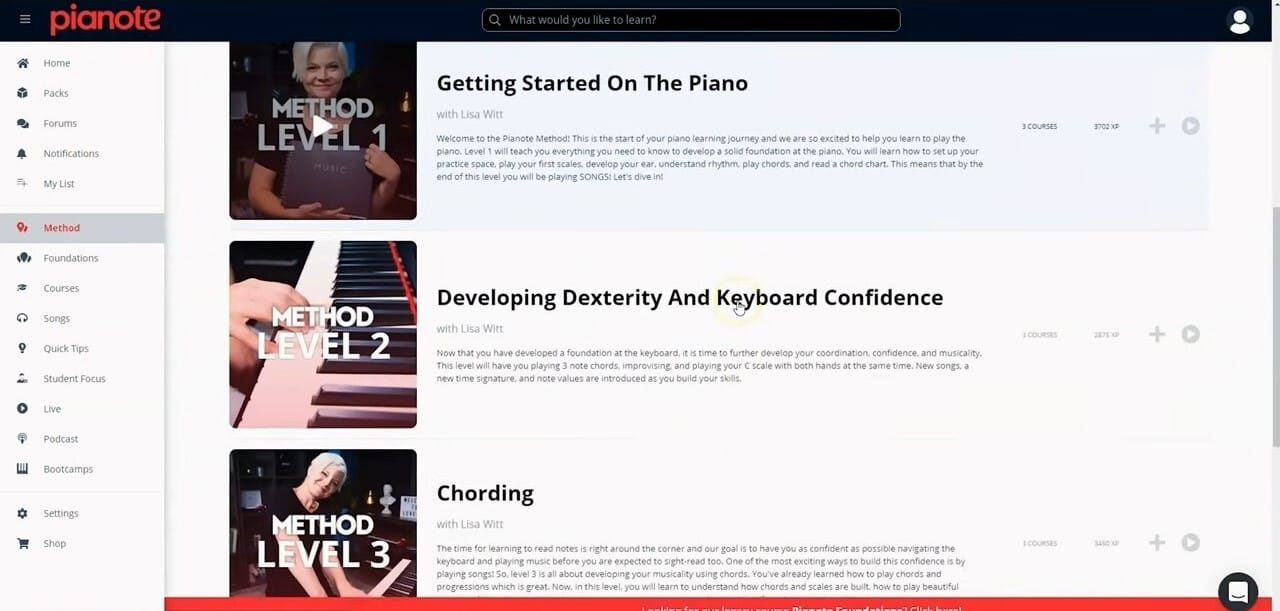
Pianote is a membership site, not an app in the traditional sense. You get thousands of HD videos organized into the 10-level Method, plus separate song tutorials, genre packs, workouts, and artist series. Everything is video-based; you watch, pause, download PDFs, and practice on your own keyboard. There’s no MIDI connection, no scrolling notation that waits for you, and no microphone listening (except for the occasional ear-training exercise).
It works on desktop, iOS, and Android via the Musora app, but the experience is clearly designed for a laptop or tablet with a real keyboard in front of you. Launched in 2012 by Musora Media, it now serves over 100,000 students globally, with a focus on contemporary styles like pop, rock, blues, and improv.
The Good Parts
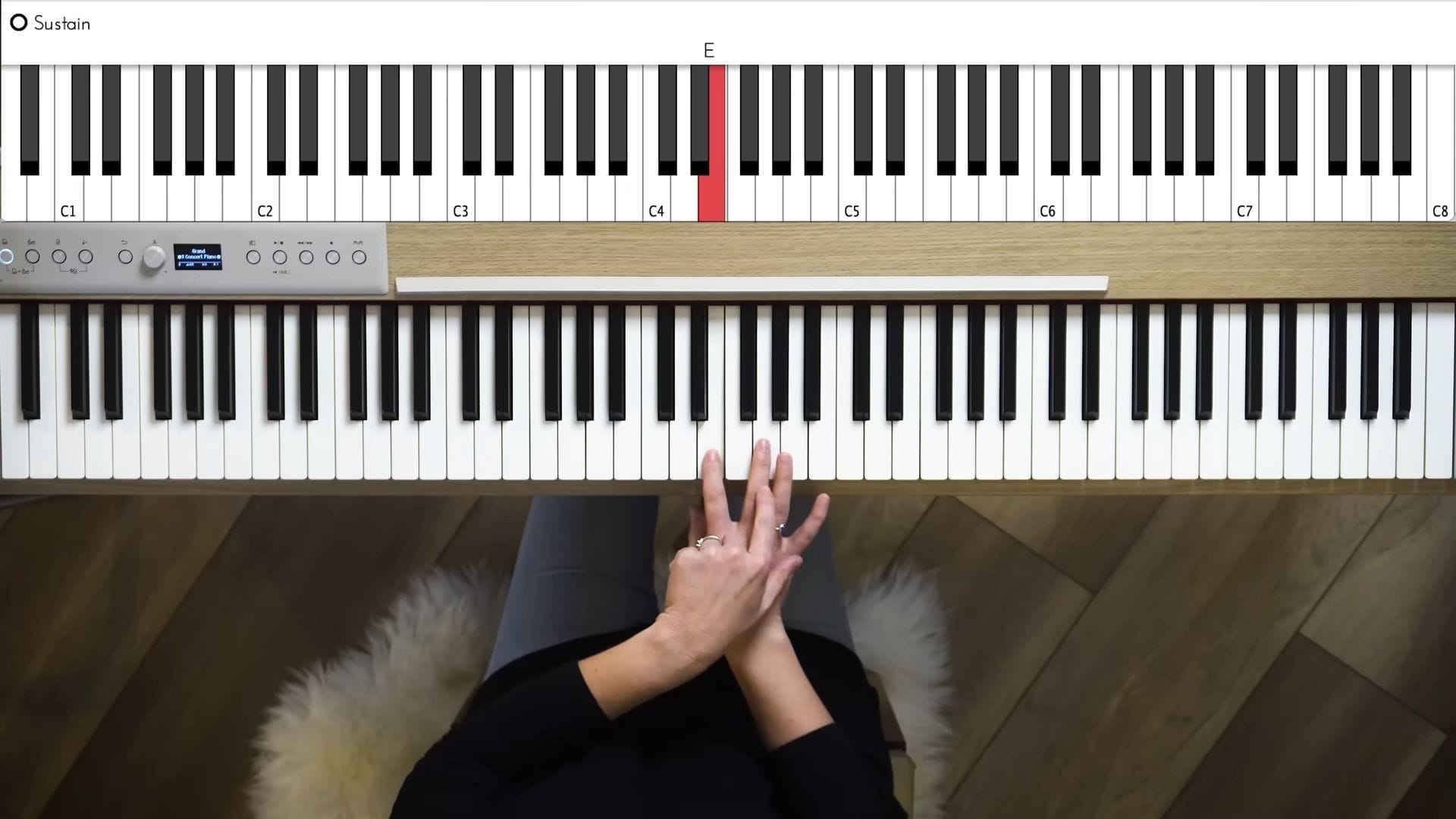
The teaching quality is legitimately high. Instructors like Lisa Witt, Colin Crump, and Goldwood are clear, enthusiastic, and actually explain why things work instead of just showing where to put fingers.
Theory, chord inversions, and basic ear training appear earlier than in most consumer apps, which is a genuine strength if you want to understand music instead of memorizing patterns. The Method’s first three levels are linear and solid, covering posture, basic rhythms, and simple songs in bite-sized 10-15 minute videos.
The song library is one of the bigger ones on the market (500+ titles and growing), with slowdown/loop tools and well-produced backing tracks. Arrangements often include multiple difficulty levels, from simplified pop hits like “Let It Be” to jazz reharmonizations. Users frequently praise the motivational community forums and weekly live Q&As, where pros answer questions in real-time (if you get selected).
Production values are top-notch: Crisp multi-angle shots, no filler, and a relaxed vibe that keeps sessions engaging. For self-motivated adults dipping into contemporary piano, it delivers real progress—many report playing full songs within weeks.
The Real Problems
- No feedback mechanism
This is the elephant in the room. You can play something completely wrong and Pianote has no idea. Video submissions for feedback exist on the Plus plan, but turnaround is days or weeks, not seconds. For total beginners, this is a serious handicap—users often switch to apps like Piano Marvel for instant MIDI checks. It builds independence, sure, but frustrates those needing quick corrections. - Overwhelming after the structured Method
Levels 1–3 are linear and excellent. After that, the platform turns into a giant buffet with no clear path. You’re left jumping between “Quick Wins,” “Song Foundations,” genre packs, and random workouts. Many students stall or quit here, as content feels scattered and YouTube-like. - Price creep and perceived greed
Long-time members are still vocal about the removal of affordable lifetime access and multiple price hikes. What used to be $149/year is now $240/year for full access, putting Pianote in the same price bracket as private Zoom lessons in many regions. The 7-day trial is stingy compared to competitors’ 30 days, and while the 90-day refund holds up, some report hurdles. - Customer service issues
Trustpilot sits at a middling 3.2/5 from 22 reviews, with frequent gripes about ignored emails, billing snafus (e.g., auto-renew surprises, cancellation glitches), and app lag on older devices. BBB complaints echo this: Double charges, no response to support tickets, and refund denials despite the guarantee. Positive reviews focus on lessons, not service—many say the content shines, but don’t test the support unless you have to. - Not ideal for classical or very young students
Technique instruction is pop-oriented (relaxed wrist, minimal pedal discussion). There are almost no etudes, Hanon, or Czerny—classical gets superficial nods in later levels. Kids under 9–10 usually need more gamification or a live teacher; the video format can feel lecture-like without bells and whistles.
Who Actually Succeeds With Pianote?
From forum activity and reviews, the typical success story is:
- Adult beginner or returnee (25–55 years old)
- Already somewhat self-disciplined
- Wants to play pop, rock, blues, or worship music
- Doesn’t mind recording themselves or self-correcting
If that’s not you, your odds drop sharply. It’s great for building musical intuition but assumes you’ll grind without constant nudges.
Better Alternatives (Depending on Your Needs)
- Need instant feedback? → Flowkey or Skoove (MIDI + microphone detection, larger song libraries of 1,500+).
- Want classical depth? → tonebase Piano or private teacher (etudes and technique focus).
- Hate subscriptions? → Pianoforall (one-time $49).
- Total beginner with zero discipline? → Simply Piano (more addictive at the start, gamified for kids).
Pianote edges out for video lovers but lags in interactivity compared to Flowkey’s sheet-music sync or Simply Piano’s mic magic.
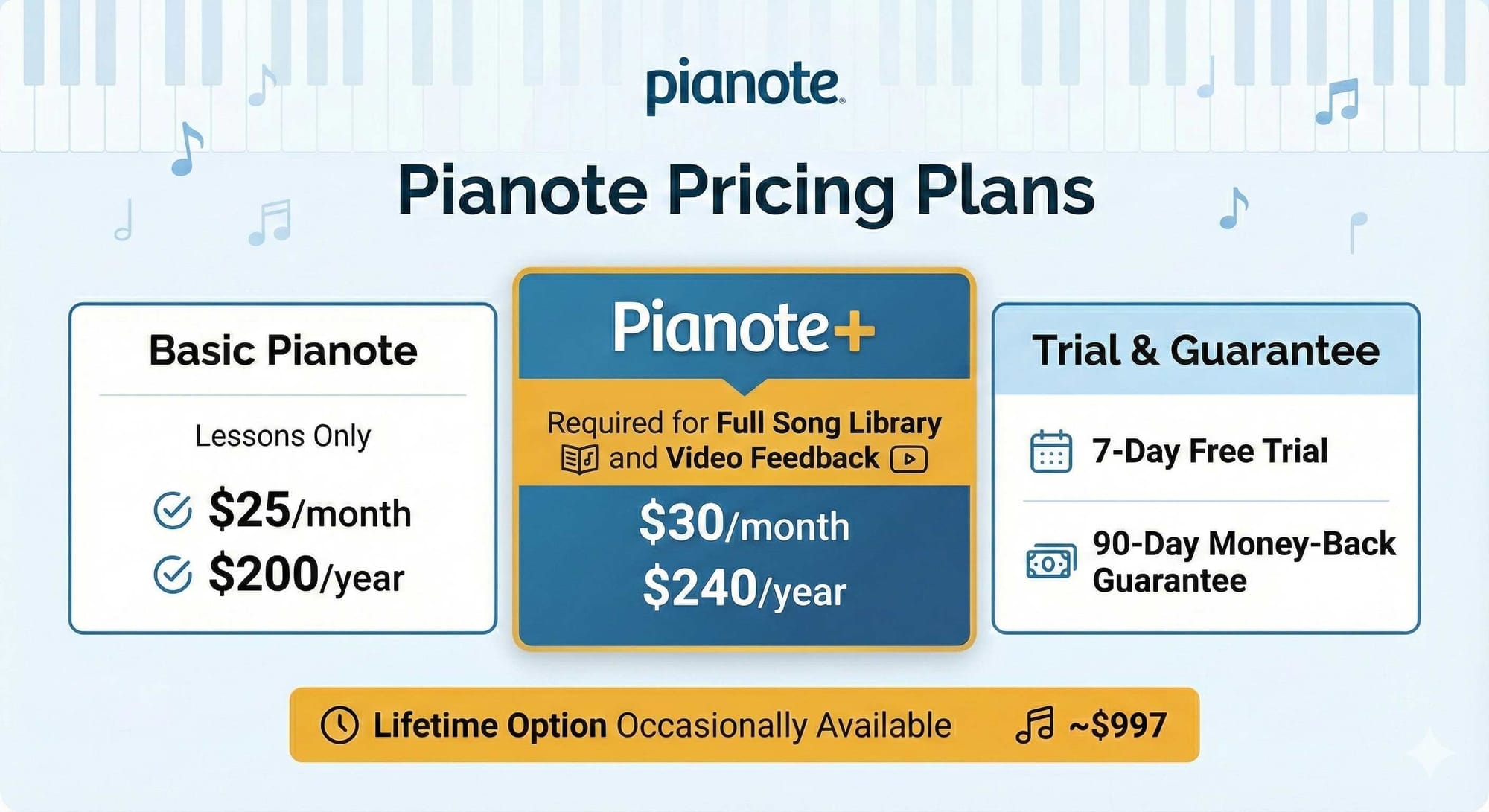
Final Verdict
Pianote is a solid, content-rich platform with excellent instructors and a great song library, but it is not a magic bullet, and it is no longer the bargain it once was. It works well for self-motivated adults who already know they want to play contemporary styles and don’t need the training wheels of real-time feedback.
If you’re on the fence, take the 7-day trial and finish at least Level 2. If you’re still excited after that, it might be worth the subscription. If you’re already lost or frustrated, cancel before the 90-day window closes. There are too many good options in 2025 for any platform to get a free pass, Pianote included.
Pianote Review 2025 Verdict
An honest, teacher-tested look at one of the biggest video-based piano platforms.
Pros
- Excellent instructors who actually explain theory & ear training
- Huge, regularly updated song library with backing tracks
- Strong community + weekly live Q&As
- Early focus on chords, improvisation, and real music-making
Cons
- No real-time note detection or instant feedback
- Content becomes cluttered & hard to navigate after Level 3
- Price has risen sharply; many long-time users feel priced out
- Customer support & billing complaints are common
Basic: $25/mo or $200/yr • Pianote+: $30/mo or $240/yr
7-day free trial • 90-day money-back guarantee
Best For: Self-motivated adults (25–55) who want to play pop, rock, blues, or worship music and value real teaching over gamification.
Not Ideal For: Total beginners needing instant feedback, young children, or serious classical pianists.

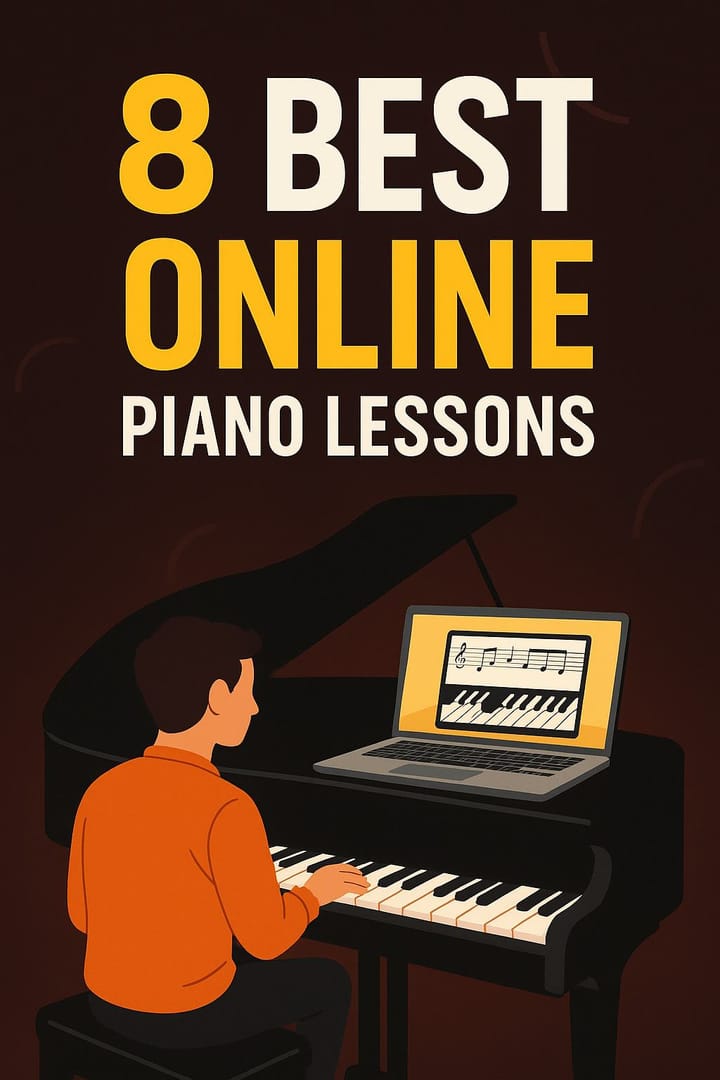


Comments ()